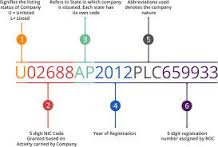No certificate of commencement of business required for companies
The government has done away with this requirement, taking another step to ease doing business in India.
The Cabinet, chaired by Prime Minister Narendra Modi, had approved the 14 changes in various provisions of the new Companies Act, 2013 under the Companies (Amendment) Act, 2015.
One of the changes brought with reference to Commencement of Business Certificate is as below:
| SECTION | EARLIER PROVISION |
PROVISIONS AFTER AMENDMENT |
|
11 |
Commencement of Business. | No requirement of Commencement of Business Certificate. Section 11 shall be omitted. |
Many promoters have been asking for the clarification as, earlier companies having share capital shall not commence any business or exercise any borrowing powers unless –
Declaration shall be filed in Form No INC 21 by a Director and the content of the form shall be verified by Practising Professional (CS/CA/CWA) stating that every subscriber has paid the value of shares agreed to be taken and paid up capital is not less than statutory limit;
and
Following documents needs to be attached with the Form No INC 22
- Registered document of the title in name of Company; or
- Notarised copy of Lease/rent agreement along with rent paid receipt (Rent receipt shall not be older than 1 month); or
- Authorisation from Owner to Company along with proof of ownership for use of premises as Registered Office (NOC can be submitted for this); and
Proof of evidence of any utility service like gas, electricity, telephone etc. in the name of owner (not older than 2 months)
The Cabinet, chaired by Prime Minister Narendra Modi, has made the meaningful change in various provisions of the new Companies Act, 2013, which came into force with effect from April 1, 2014, inter-alia, about the Commencement of Business Certificate and now, the government has done away with this requirement, taking another step to ease doing business in India.


